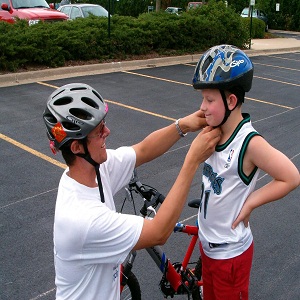How to Teach a Child to Ride a Bike
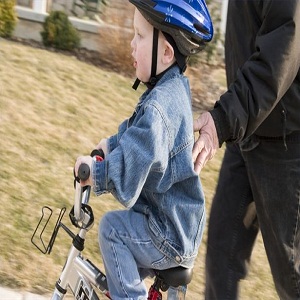
Learning to ride a bike is one of the most important and memorable stages of growing up as a child. Like any other stage, parents have to help their children ride a bike and master it so that they can have all the fun cycling around the place. Promoting from a tricycle to a regular bike might appear hard in the beginning but it is all about achieving the balance without any fear of falling down. Our step by step guide has several options and approaches for parents who face the task of teaching their kids to ride. Any one or amalgamation of two three can help your child learn in a safe and fun way.
Instructions
-
1
Make your child comfortable in the first place:
The most important point to be taken care of before starting the practice is to get the right sized bike for your child. Get a bike that the child can bestride comfortably and his feet can touch the ground. At times getting an under sized for an initial process helps accelerate learning. If you do not want to incur an additional cost, you can borrow from friends and neighbors for a few days. Adjust the set level to where your child thinks is comfortable for him.
Choose a practice area that is paved, wide and relatively less dense place like a park, driveway, parking area or playground.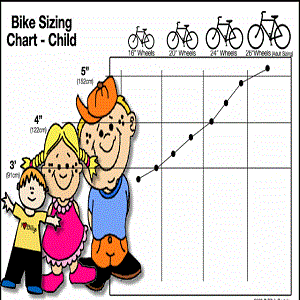
-
2
Training wheels:
Training wheels are usually the first step involved in learning to cycle on a bike. The additional training wheels give a child extra balance. However, do not keep training wheels on for long. Remove one training wheel at first and let the child adapt to it. Remove the other one after some time so that the child can now cycle properly.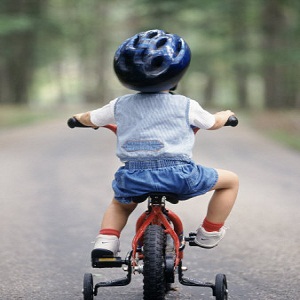
-
3
Scooting:
Take the pedals off the bike or get a Hobby Horse style bike which has no pedals at all for training purposes. Lower your child's seat level to a point where his feet can touch the ground easily. Ask him/her to scoot around with the bike. This will give them a sense of balance because they will be controlling with their feet on ground instead of being on the pedal above the ground. Encourage the child to gradually increase the lengths of the steps to increase speed. Ask him/her to raise the feet after the scoot and enjoy the distance the bike will cover. This step can be implemented for a week or two till the child feels comfortable in moving on to paddling.
Scooting improves balance which is the most important part of learning to ride.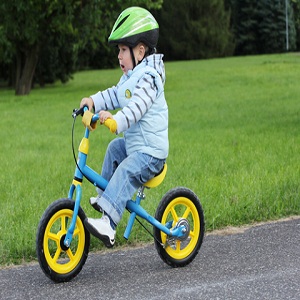
-
4
Working with them:
Help your child straddle the bike. Make him/her comfortable in the seat. Hold him/her by the shoulder and ask to paddle. Your support will help keep the balance. Start slow, gradually increasing the speed. Paddling adds balance and your child starts going with the rhythm. Let go of the shoulder with a reassurance that you are still there. Holding a child by the shoulders is a good way to make him learn but can cause a parent back ache and also has risks of bumping in to the bike while turning or braking. However, avoid running with them holding the handlebar because this way they will never learn to balance themselves.
Some parents hold a stick, taped to the child’s saddle so that the child has a confident feeling. You can also wrap a string or a bath towel around his/her waist and run after them holding that.
Running with the child while cycling is also effective method. You can give suggestions and be near to help in case of any chance of fall.
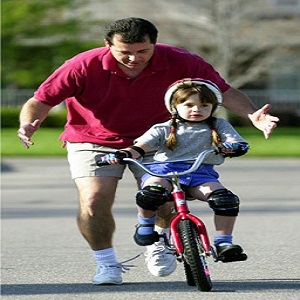
-
5
Refining the techniques:
Once the child has learnt to cycle on a straight road, introduce barriers and turns and instances when he has to brake. Teach him to brake gradually instead of braking instantly to lessen the impact. Take your own cycle out and go on a family cycling spree where your child can learn from you.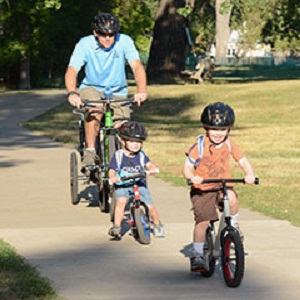
-
6
Be ready for falls and initial disappointments:
Children learn best by practice. Some even learn it without formal instruction by parents. Tell your child that falling off the bike in the beginning is pretty normal and you had the same experience. Children take their time in learning an new skill. Get him a helmet that fits snugly to cover his head as protection in the fall. Cycling gloves known as track mitts help prevent injuries to the knuckles.